Horten Ho 229 B
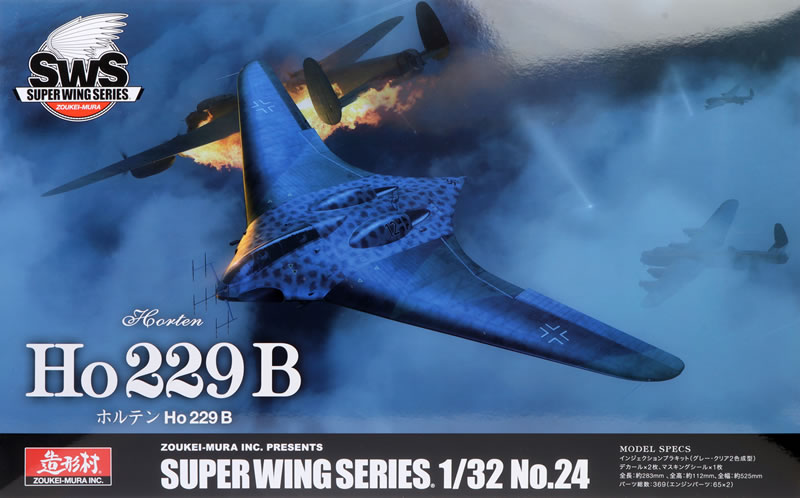
Zoukei-Mura Super Wing Series,
1/32 scale
S
u m m a r y : |
Description and Item No.: |
Zoukei-Mura Super Wings Series Kit No. 24 - Horten Ho 229 B |
Contents and Media: |
359 parts in grey and clear plastic (eleven of the sprues are clear, including all of the major wing panels); self-adhesive die-cut masks; markings for five schemes; detailed 88 page illustrated instructions. |
Price: |
TBA. Will be available from Zoukei-Mura's Volks online store
Pre-order period: from Sat, July 5th, 2025 to Sun, July 27th, 2025 Release scheduled: Sat, August 9th, 2025
and a select number of retail outlets. |
Scale: |
1/32 |
Review Type: |
First Look |
Advantages: |
All parts and decals included for building either the two-seater Ho 229 B night fighter or Ho 229 A single-seater day fighter; full interior detail including skeletal panels, tubular framework, engines, fuel tanks, weapons and cockpit; many clear parts including all major structural pieces for "see through" option; finely recessed panel lines and fasteners; amazing attention to detail; wide selection of useful options; perfectly printed glossy Cartograf decals; accurate. |
Disadvantages: |
Clear plastic parts may be brittle; any filler or excess glue applied to the clear parts will be visible. You do always have the option to paint the clear parts though. |
Recommendation: |
Unlike their recent 1/32 scale Fw 190 A-4 and Bf 109 G-6, Zoukei-Mura's latest offering, the Horten Ho 229 B, harks back to an earlier time in the company's history when most releases featured clear panels for a clear cutaway effect. This is because the new two-seater is based upon Z-M's 2014 release Horten Ho 229 A single seater.
In fact, Zoukei-Mura has generously provided all the parts to build either the Ho 229 A or Ho 229 B straight from the box. Even decals for the single seater are included.
Detail is extraordinary with a genuinely thorough interior. This includes skeletal panels, tubular framework, engines, fuel tanks, weapons and cockpit.
Even so, if you don't want to display the interior of your Horton, you can simply paint the clear plastic parts.
Zoukei-Mura's 1/32 scale Horton Ho 229 is a large and comprehensively detailed model inside and out. It will be very impressive on your model shelves.
Highly Recommended. |
Reviewed by Brett Green

The Horten H.IX, RLM designation Ho 229 (or Gotha Go 229 for extensive re-design work done by Gotha to prepare the aircraft for mass production) was a German prototype fighter/bomber designed by Reimar and Walter Horten to be built by Gothaer Waggonfabrik. Developed at a late stage of the Second World War, it was one of the earliest flying wing aircraft to be powered by jet engines.
The Ho 229 was designed in response to a call made in 1943 by Hermann Göring, the head of the Luftwaffe, for light bombers capable of meeting the "3×1000" requirement; namely, to carry 1,000 kilograms of bombs a distance of 1,000 kilometres with a speed of 1,000 kilometres per hour. Only jet propulsion could achieve the required speed, but such engines were very fuel-hungry, necessitating considerable effort across the rest of the design to meet the range requirement.
The flying wing configuration was favoured by the Horten brothers due to its high aerodynamic efficiency, as demonstrated by their Horten H.IV glider. In order to minimise drag, the Ho 229 was not fitted with extraneous flight control surfaces. Its ceiling was 15,000 metres. The Ho 229 was the only design that came close to the requirements, and the Horten brothers quickly received an order for three prototypes after the project gained Göring's approval.
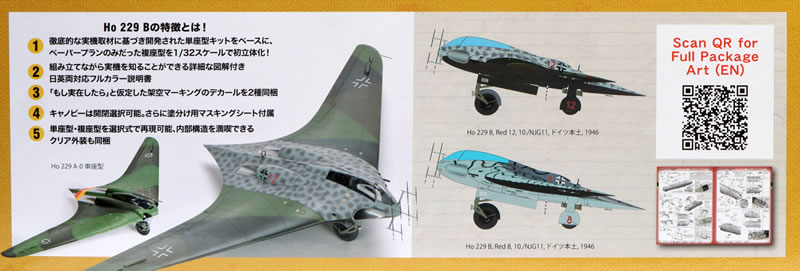
Due to the Horten brothers' lack of suitable production facilities, Ho 229 manufacturing was contracted out to Gothaer Waggonfabrik; however, the company allegedly undermined the project by seeking the favour of Luftwaffe officials for its own flying wing design.[citation needed] On 1 March 1944 the first prototype H.IX V1, an unpowered glider, made its maiden flight, followed by the H.IX V2, powered by Junkers Jumo 004 turbojet engines in December 1944. However, on 18 February 1945 the V2 was destroyed in a crash, killing its test pilot. Despite as many as 100 production aircraft being on order, none were completed. The nearly complete H.IX V3 prototype was captured by the American military and shipped to the United States under Operation Paperclip. It was evaluated by both British and American researchers before entering long term storage. The H.IX V3 is on static display in the Smithsonian National Air and Space Museum.*
Zoukei-Mura's new 1/32 scale Horton Ho 229 B comprises 359 parts in grey and clear plastic (eleven of the sprues are clear, including all of the major fuselage and wing panels), self-adhesive die-cut masks, markings for five schemes and a detailed 88 page illustrated instruction book.
Unlike their recent 1/32 scale Fw 190 A-4 and Bf 109 G-6, Zoukei-Mura's latest offering, the Horten Ho 229 B, harks back to an earlier time in the company's history when most releases featured clear panels for a cutaway effect. This is because the new two-seater is based upon Z-M's 2014 release Horten Ho 229 A single seater.
In fact, Zoukei-Mura has generously provided all the parts to build either the Ho 229 A or Ho 229 B straight from the box. Even decals for the single seater are included. Detail is extraordinary with a genuinely thorough interior. This includes skeletal panels, tubular framework, engines, fuel tanks, weapons, cockpit and more.
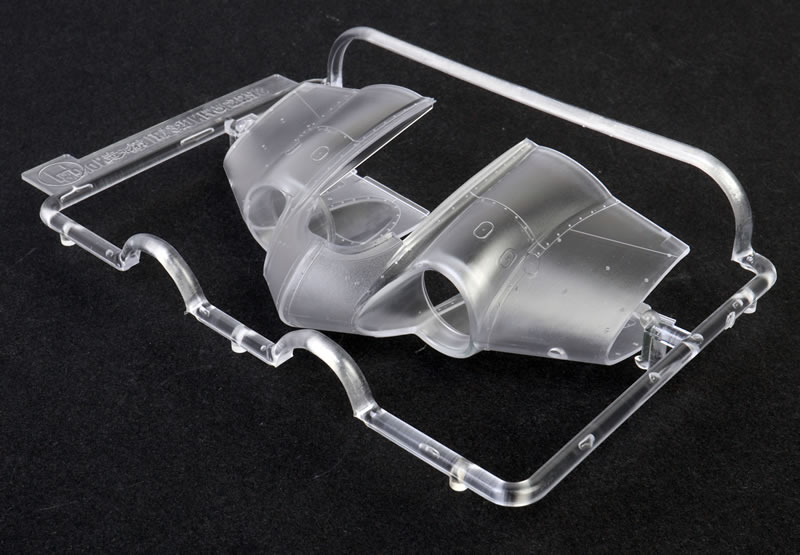
However, the clear skin has a number of potential hazards. The large clear plastic parts may be brittle. Also, any filler or excess glue applied to the clear parts will be quite visible. Even so, if you don't want to display the interior of your Horton, you can simply paint over the clear plastic parts..
The parts breakdown is strikingly unique to Zoukei-Mura with full detail inside and out. This includes intricate frames represented on the inside surfaces of the wings and fuselage.
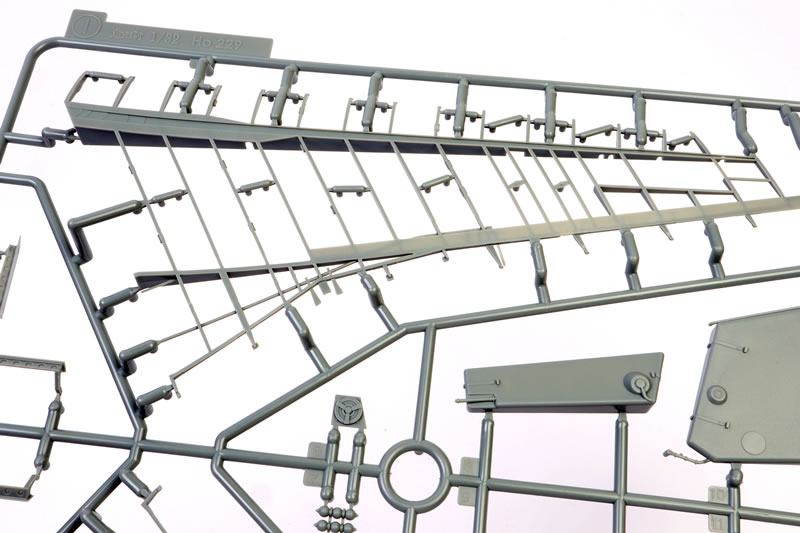
On the exterior, surface textures are restrained with fine recessed panel lines, hatches and minimal fasteners and rivets. Most of the exterior panels are moulded in clear plastic.
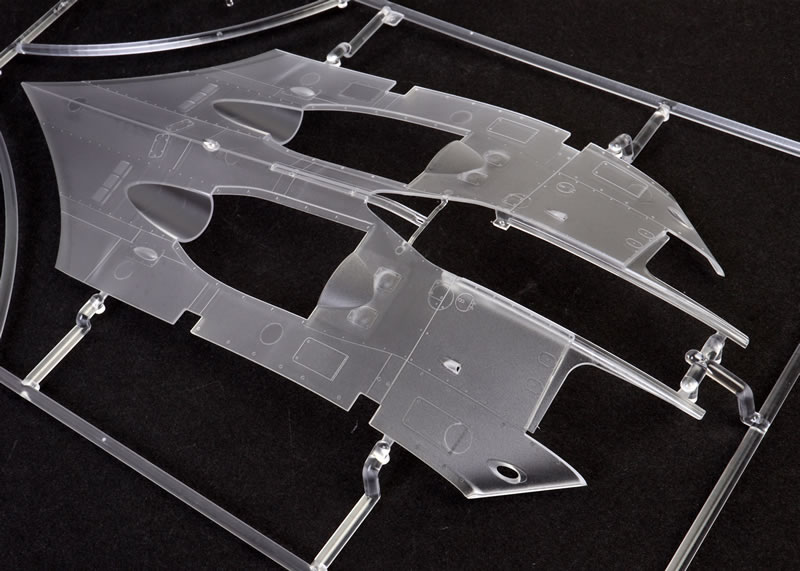
Zoukei-Mura has supplied two fully detailed Jumo 004 B-2 engines. Each engine is made up from 51 plastic parts plus the cowlings. The engines also include interior detail - eight rows of turbine fans for a start. The result will be very impressive. You may also display the engines on a jig built from the plastic in Sprue A if you wish too.
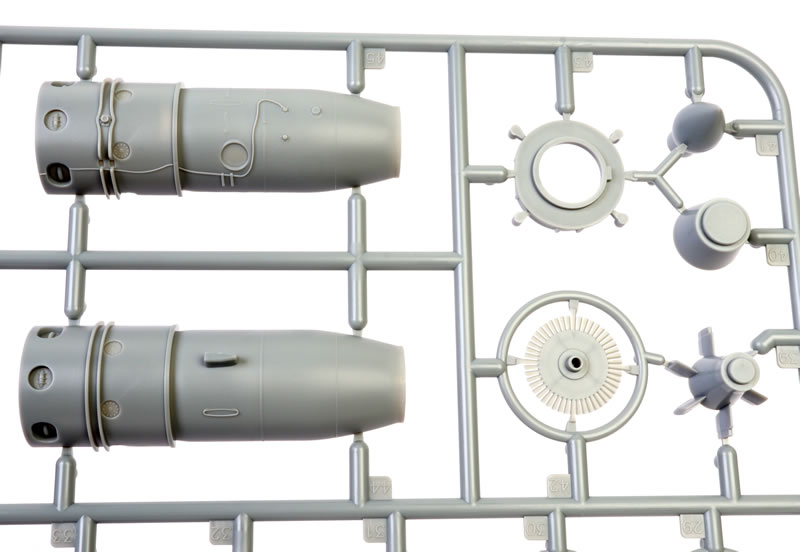
The model is built up in layers.
This is where the assembly differs depending on whether you are building the Ho 229 B two-seater or the Ho 229 V3. I recommend that you check the instructions very carefully at every step of assembly to make sure you don't get the parts for your selected version mixed up.
Regardless of the version you choose, the fuselage frames are very impressive. They are bristling with linkages, actuators and braces.
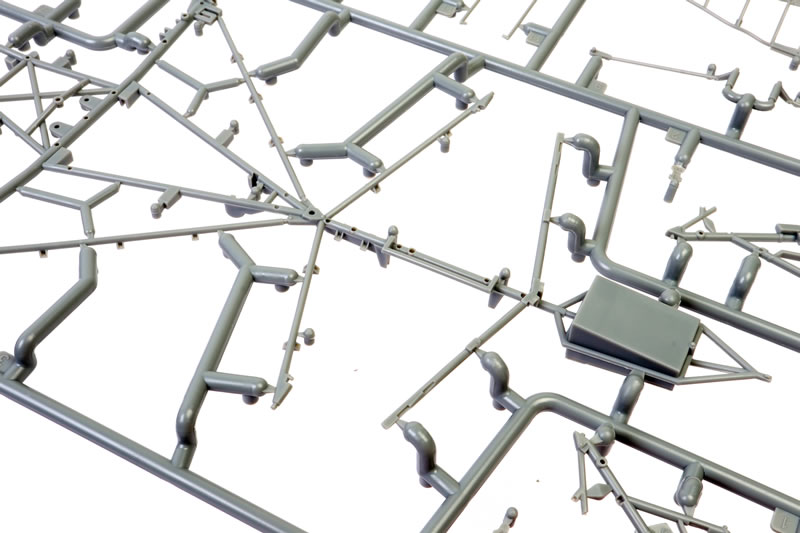
The MK 108 30 mm cannon and ammo feeds are encased at this time.
The engines are also cocooned inside this intricate plastic frame.
The cockpit is another ode to detail whether you are building the single seater or the two seater.
Two sets of ejection seats are included - one with harness straps and one without. Personally I prefer the harness version. The drape and detail of the straps and hardware look terrific. They will really shine with creful painting and weathering.
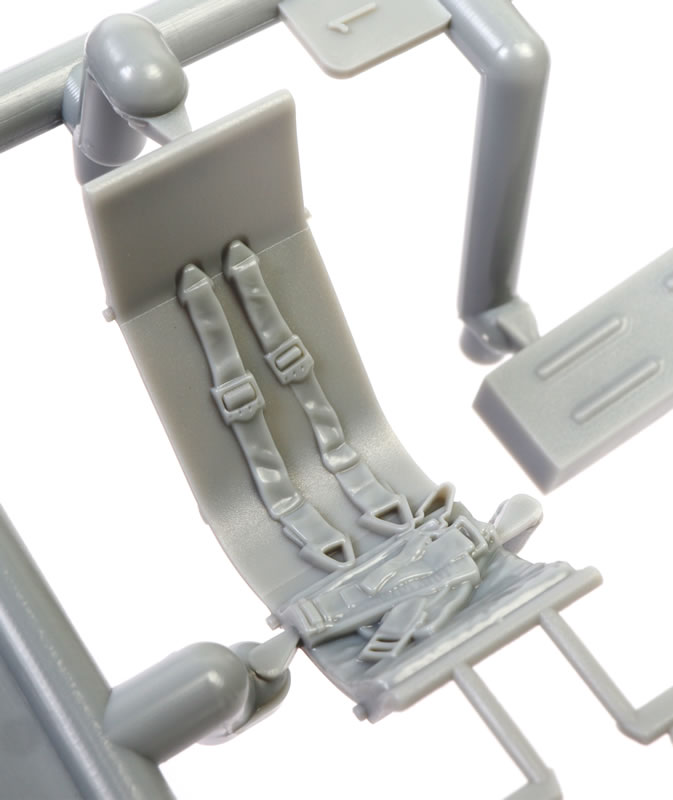
Two plastic instrument panels are supplied, one clear and one in grey plastic.
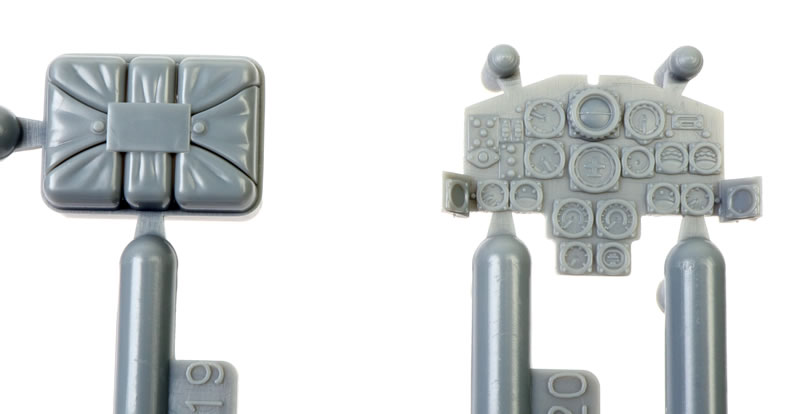
The panel is supplemented by detailed decals for dials, both individual dials and a single overlay decal designed to be applied to the rear of the clear panel (Part P-5). Decals are also supplied for the radar operator's station.
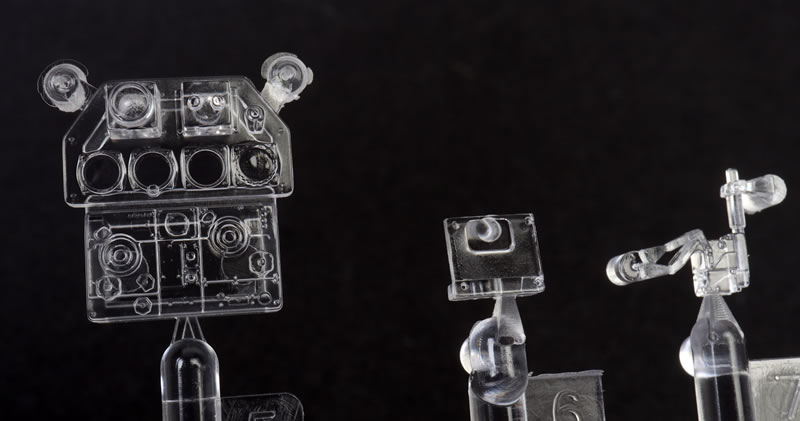
So many choices!
Control surfaces including air brakes are all separate parts and may be posed to taste.
The dropped flap option features deep structural detail on the inner surfaces.
The undercarriage and wheels are big and chunky but will be simple to assemble.
With the undercarriage fitted, we may begin skinning the model with its clear plastic outside panels.
The fuselage is skinned with two large clear plastic parts - top and bottom.
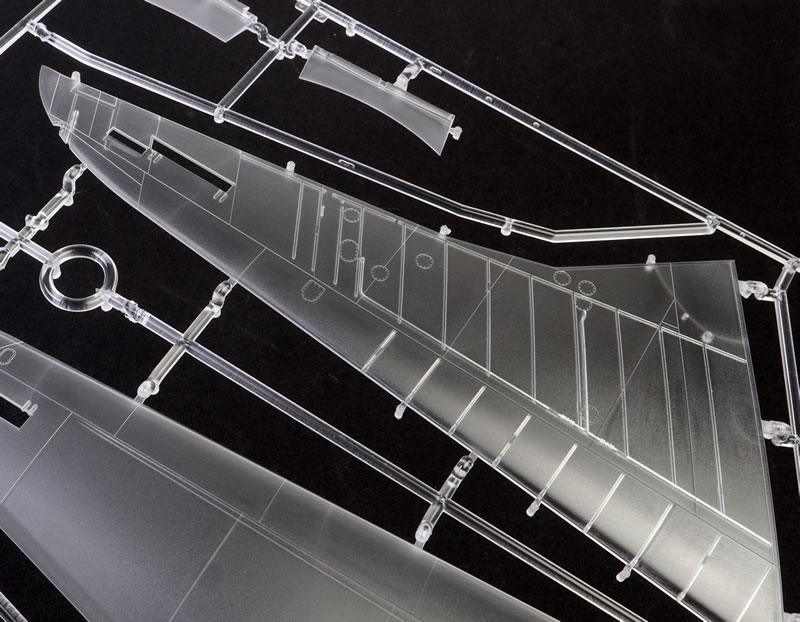
The wings are built up around a large set of frames and stringers. Four fuel tanks are fitted inside each wing. Bulkheads, oxygen bottles and fuel lines are also included. The large upper and lower, port and starboard side wing skins are attached now.
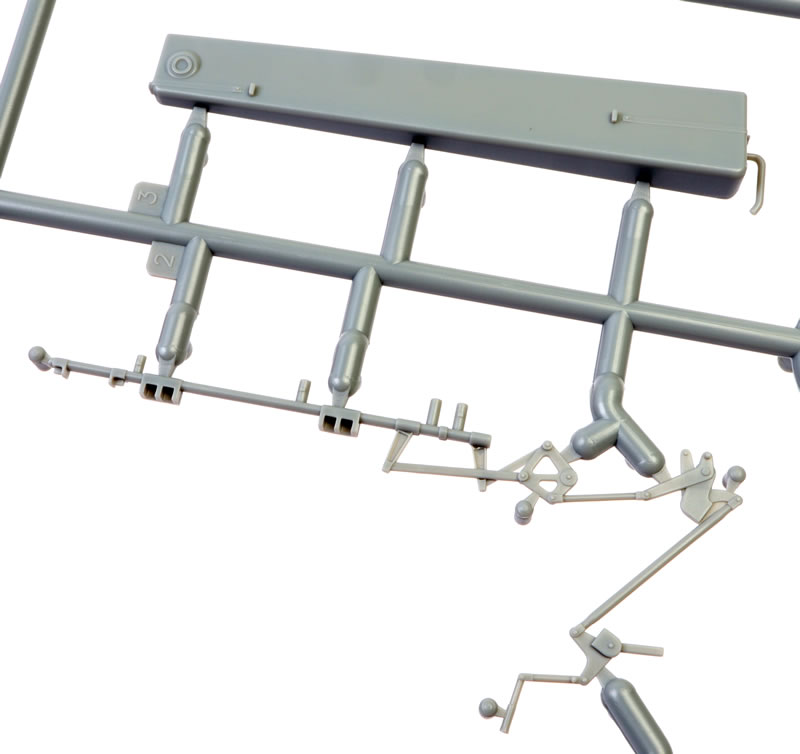
The wings are held to the fuselage with two locking pins on each side. With care, it looks as though you will be able to fit the locking pins without glue and permit the wings to be removed when the model is finished.
Two deep drag rudders are included on the upper and lower wings. These may be posed deployed or retracted.
The canopies are large single clear pieces that sit atop a plastic frame. The windscreen is separate on the single-seater and integrated with the nose on the two-seater.
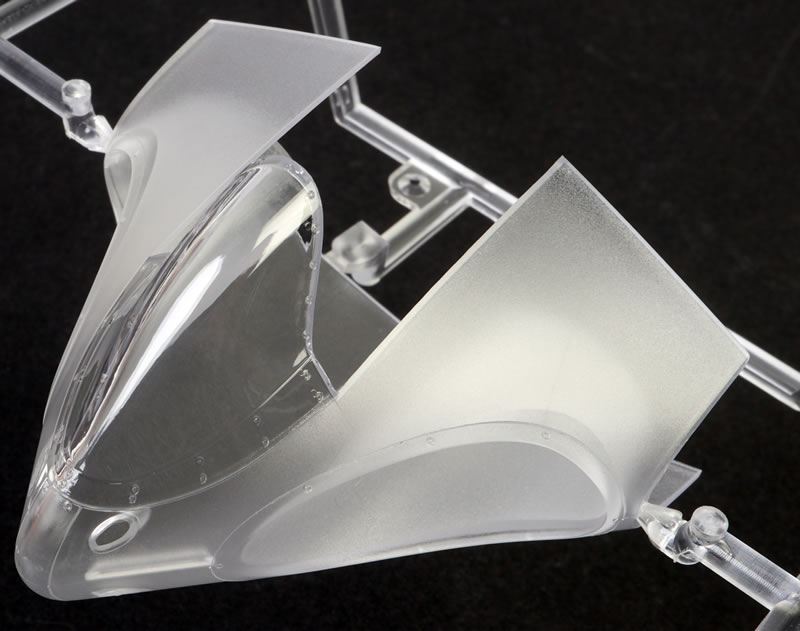
The sliding canopies may be posed open or closed.
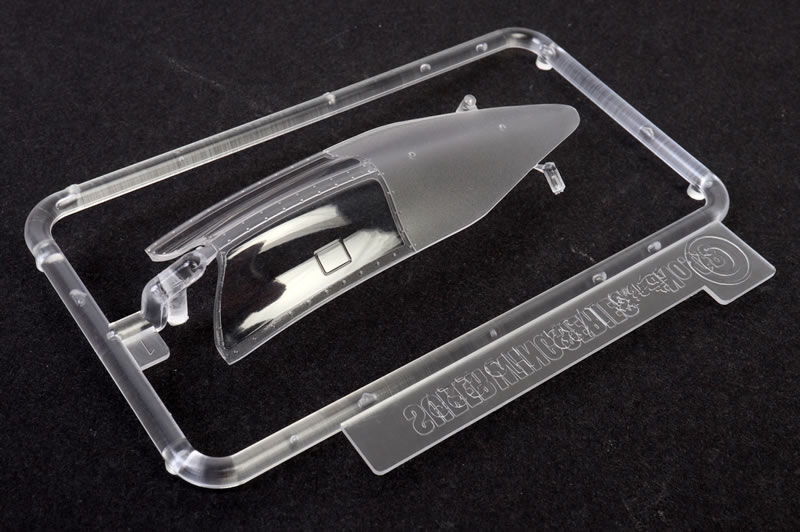
The plastic radar array is thin and quite acceptable as-is. They feature nice long positive location pins that should align everything nicely.
Decals are printed perfectly by Cartograf.
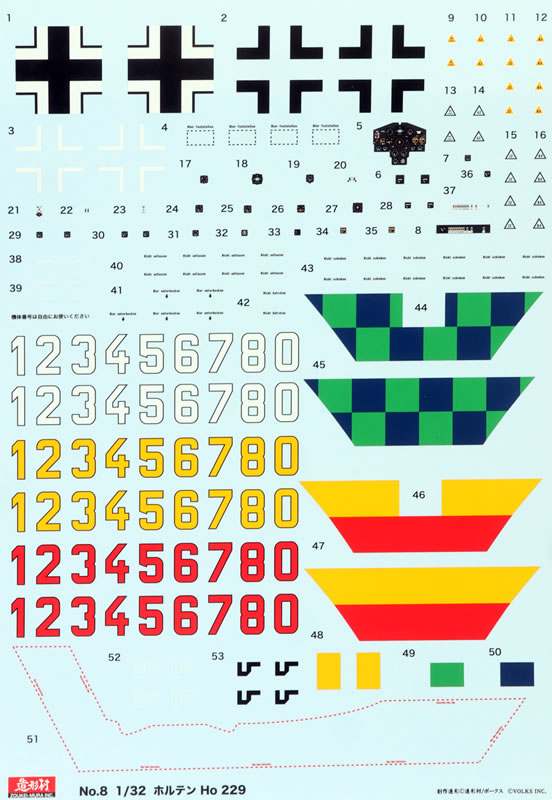
Two sheets are included.
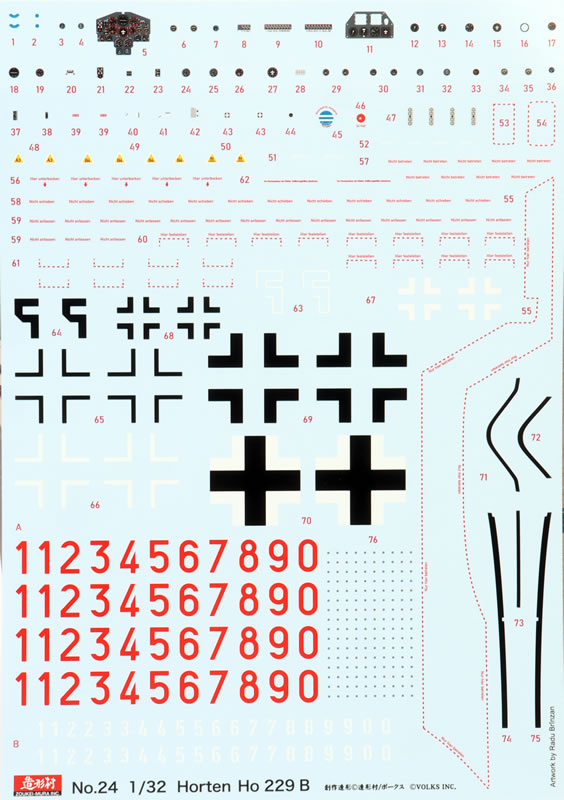
Stencil markings are printed onto the large decal sheet along with the unique markings of the five subjects..
The inclusion of die-cut self-adhesive masks is a nice touch.
Instructions are exhaustive with 88 pages of illustrations and text.
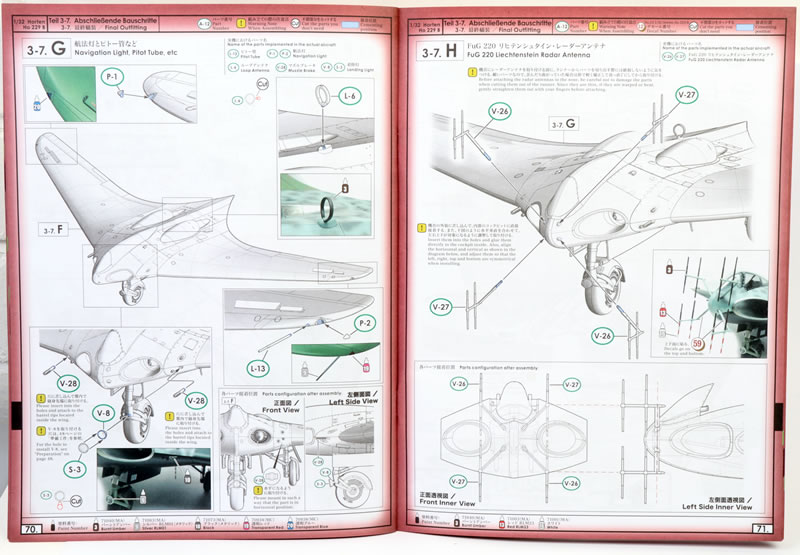
Zoukei-Mura offers multiple views from different angles to ensure that the modeller fully understands the sequence and position of assembly.
Zoukei-Mura's 1/32 scale Horton Ho 229 is large and comprehensively detailed inside and out. It will be very impressive on your model shelves.
Highly Recommended
* Historical summary courtesy of Wikipedia
Thanks to Zoukei-Mura for the sample
Review Text and Images Copyright © 2025 by Brett Green
Page Created 20 June, 2025
Last updated
20 June, 2025
Back to HyperScale Main Page
Back to Reviews Page

|
Home
| What's New |
Features |
Gallery |
Reviews |
Reference |
Forum |
Search